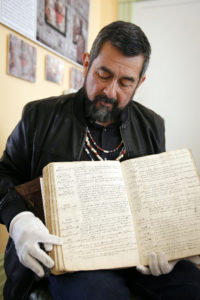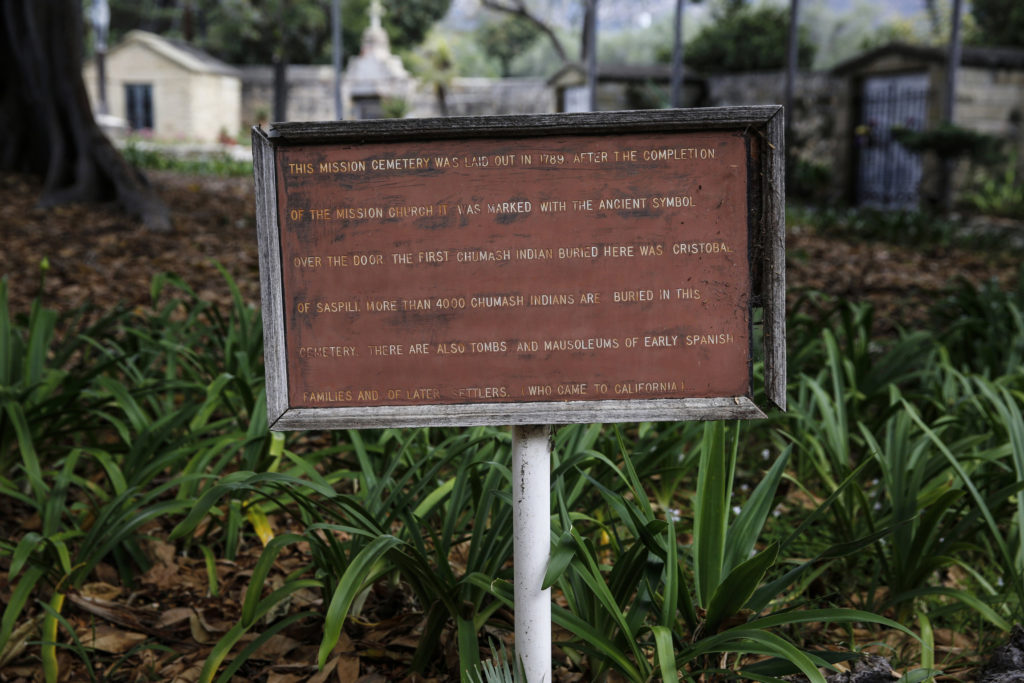SAN FRANCISCO (CNS) — To Andrew Galvan, Blessed Junipero Serra is a stalwart of faith and mission worthy of the title “saint.”
“He was all wood and nails. He was a tough dude. He fought, he defended, he wrangled, he was frustrated and he was frustrating,” Galvan told Catholic News Service.
A descendant of tribal members from the San Francisco Bay region, Galvan traces his family roots to California’s first Christians, thousands of whom were baptized and confirmed by the 18th-century Spanish missionary.

Pope Francis will canonize Blessed Junipero Sept. 23 in Washington. Galvan said he hopes to be there.
Long a promoter of Blessed Serra, Galvan is the museum director and curator of Old Mission Dolores, the sixth-oldest of California’s 21 historical missions.
He said Blessed Serra was “on fire” to heed Christ’s call to witness, like Jesus’s apostles and St. Francis of Assisi.
“His goal in life, from the time he was a novice … was to be a missionary to Indians in the Americas, to bring the Gospel message where it had never gone before.”
Galvan said the friar, who was beatified in 1988 by St. John Paul II, never veered from that objective and went about it tirelessly, foregoing any convenience for himself.
According to his biographers, he slept little, traveled thousands of miles by foot, quietly endured injury and pain, ate modestly and spent long hours in prayer. When Blessed Serra thought he was failing in his efforts to evangelize, he blamed such defeat on his own sins.
“My God, I couldn’t live the life he lived,” Galvan said.
Miquel Joseph Serra took the Franciscan habit at age 17. He chose the name Junipero, after a companion of St. Francis known for his holy simplicity.
Junipero Serra became an adept student of philosophy and theology and was inspired by the stories of saints and missionaries. Always looking outward, the friar left a successful and comfortable life as a professor to embark on a missionary journey to America, knowing he would never return to Spain.
In Mexico, he spent 17 years building up Indian missions in the Sierra Gorda and traveling far and wide, preaching popular missions. In fervent sermons, he called on those who had fallen from faith to return to God’s mercy.
Blessed Junipero did not reach upper California until he was 55. And when he did, said Galvan, he jumped from his donkey and kissed the ground.
“He’s on sacred ground, because in his mind, being a student of (John Duns) Scotus, he is now entering this world that is completely innocent,” he said referring to the famed Franciscan priest-philospher of the Middle Ages. “And he (Serra) is the one bringing the Gospel where it has never been brought before.”
Galvan has studied Blessed Serra for 37 years and has a unique connection to the soon-to-be saint. He can point directly to him as the person who brought Christ to his family.
“That’s a momentous event,” said Galvan. “I can go into Mission Dolores right here and say, ‘It is in this very room … that my family first became Christian.’ How many people have that joy and pleasure?”
Galvan, though, does not look back with rose-colored glasses. He is acutely aware of the toll upon the California native peoples by the missions, the colonial era and the times that followed.
He calls the encounter between Europeans and Indians an “unmitigated disaster.”
“The colonization destroyed the native people along the California coast because of the destruction of the native environment, the changing of lifestyle and the unfortunate introduction of European diseases.”
After Blessed Serra’s death in 1784, mission populations rose and then sharply dropped. Closely knit mission communities only worsened the spread of illness. Disease was rampant and deadly.
An interpretive sign in the graveyard of Old Mission Santa Barbara gives an idea of the loss: “More than 4,000 Chumash Indians are buried in this cemetery.”

Despite the harsh history, Galvan said Blessed Serra deserves his devotion.
“He loved my ancestors. He loved Indians, He was in love with the idea of being a missionary here. His descriptions of my ancestors are fantastic,” he said. “I’m in love with him and I’m devoted to him.”
But not everyone shares that enthusiasm.
Galvan’s cousin and apprentice, Vincent Medina, is of a younger generation of California native people promoting and teaching their language and culture. He is one of only a handful of people who can speak and understand Chochenyo, the nearly lost tongue of the East Bay Ohlone.
After studying his people from before and after Spanish colonization, Medina said he doesn’t believe Father Serra should be among those the church names saints.
“Society for Ohlone people before colonization was good,” he said. “The world before us was full of richness. It was full of complexity, it was full of beauty, the language speaks to that, the songs speak to that.
“There was ethnocide in the missions, there was a destruction of language, there was a destruction of culture.”
Medina told CNS Blessed Serra’s canonization will only further the resentment many Indians have toward the church.
Additionally, Medina said he views saints as people who rise above the iniquities of their time. He thinks Blessed Serra might have had better forethought and a gentler approach to sharing his faith.
“He saw death, but he still kept moving forward. To me, that’s not somebody who lived outside of their era. To me, that’s somebody who’s going with the status quo of their time.”
— By Nancy Wiechec, Catholic News Service.






